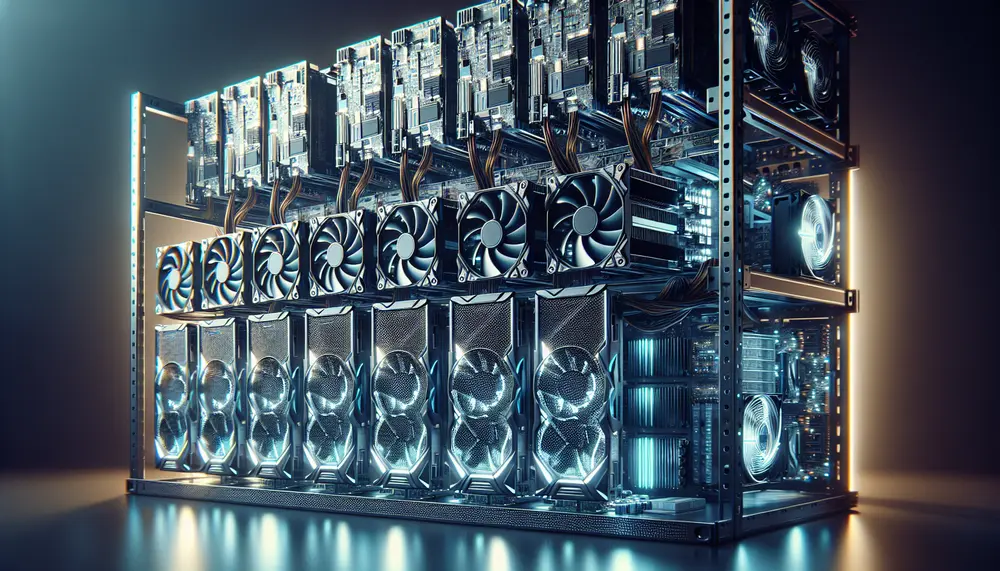Mining Operations
Mining Operations
Bitcoin mining operations can be seen as the engine room, where the digital gold of the 21st century is created. This block of text reveals how these operations make an essential contribution to the functionality of the endless Bitcoin universe.
Introduction to Mining Operations
Bitcoin mining operations are the organized efforts by miners to solve complex mathematical problems. This process is key to the security and sustainability of the Bitcoin network.
Role of Mining Operations
The main aim of mining operations is to include Bitcoin transactions into the blockchain by solving complex equations. These operations also bring new Bitcoins into existence, serving as an engine for cryptocurrency distribution.
Components of Mining Operations
A typical Bitcoin mining operation consists of extensive hardware and software setups. These include mining rigs - high-powered computer systems with specialized hardware - and mining software that carries out the actual complex calculations.
Types of Mining Operations
There are primarily two types of mining operations: solo mining and pool mining. While solo mining involves a miner doing all calculations alone, pool mining has many miners joining forces to solve the algorithms.
Running a Mining Operation
To set up and run a mining operation, miners need to consider several factors. These include the cost of mining equipment, electricity bills, and the current price of Bitcoin.
Importance of Mining Operations
Bitcoin mining operations are essential for the entire cryptocurrency network. They ensure a secure and decentralized system that maintains trust and creates new Bitcoin.
In conclusion, Bitcoin mining operations lie at the heart of the Bitcoin ecosystem. They are an integral part of the cryptocurrency world, bringing not only Bitcoin into play but also ensuring the safety and integrity of transactions as a whole.
Blog Posts with the term: Mining Operations

This guide simplifies Monero solo mining with XMRig, covering setup and optimization to mine efficiently. It explains the benefits of using XMRig, necessary hardware requirements, and how to set up a Monero wallet for secure fund management....

Monero mining with CPUs is accessible and cost-effective due to the RandomX algorithm, which optimizes CPU performance over GPUs; top processors include AMD Ryzen 9 3950X and Intel Core i9-10900K. Benchmarking involves measuring hash rates and power consumption using software...

Cloud mining allows individuals to lease processing power from remote data centers for cryptocurrency mining, offering convenience and lower upfront costs but potentially reduced earnings and risks of scams. Hardware mining involves owning equipment with greater control and profit potential...

This guide provides a comprehensive overview of setting up an Ethereum mining rig, covering essential components like GPUs and motherboards, as well as key concepts such as Proof of Work (PoW) and hashrate. By the end, readers will understand how...

Monero mining on AMD Ryzen CPUs is popular due to their high performance and efficiency; this article provides a guide for optimizing these processors, covering hardware selection, BIOS settings, and software configuration to maximize mining profitability. Key considerations include core...

Bitcoin mining pools are groups of miners who combine their computing power to mine Bitcoin blocks and share the rewards. Joining a mining pool increases the frequency of payouts and reduces the volatility of the mining process, making it a...

This article explores the connection between Bitcoin mining and renewable energy, specifically focusing on solar, wind, and hydropower sources. It highlights the shift towards renewable energy in Bitcoin mining driven by environmental concerns, economic benefits, and advancements in technology. The...

Setting up a mining pool involves configuring the correct URL and port settings to ensure efficient and secure operations, with considerations for cryptocurrency type, geographical location of pools, reputation, fees, supported coins, and security protocols. Understanding commonly used ports like...

Crypto mining on a Mac is possible but requires careful planning due to hardware limitations and software compatibility issues. To optimize performance, choose the right mining software like CGMiner or MacMiner, manage background processes, update your system regularly, and consider...

When cashing out crypto from mining, choose your payout coin wisely by considering transaction fees, market volatility, liquidity, and future potential; also understand minimum withdrawal requirements to ensure efficient transactions....

Choosing between mining pools and solo mining involves weighing the benefits of shared resources, steady income, and community support against the autonomy, full reward retention, and privacy offered by going it alone; each option has its own set of challenges...

Setting up a crypto mining server involves selecting optimal hardware like GPUs or ASICs, building infrastructure with adequate power and cooling, installing suitable software, and ensuring legal compliance for efficient operations. This process requires careful planning to optimize performance while...

Strip mining is a surface mining method used to extract mineral deposits close to the earth's surface by removing overburden, with techniques like area and contour mining being particularly effective for coal extraction. While it offers efficiency and cost-effectiveness compared...

Bitcoin mining costs are heavily influenced by electricity expenses, which vary globally and can determine the profitability of operations; miners must balance efficiency, location advantages, and regulatory environments to succeed....

